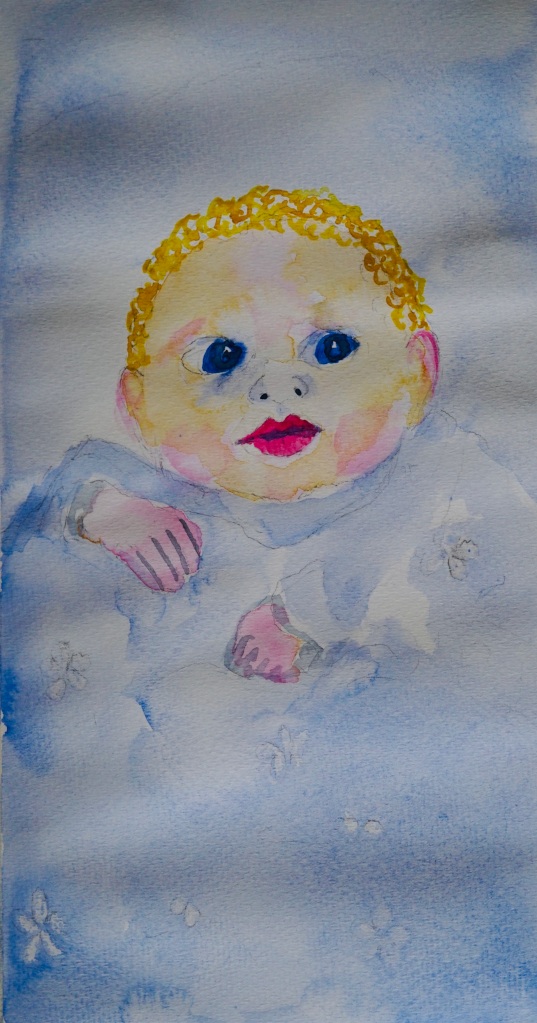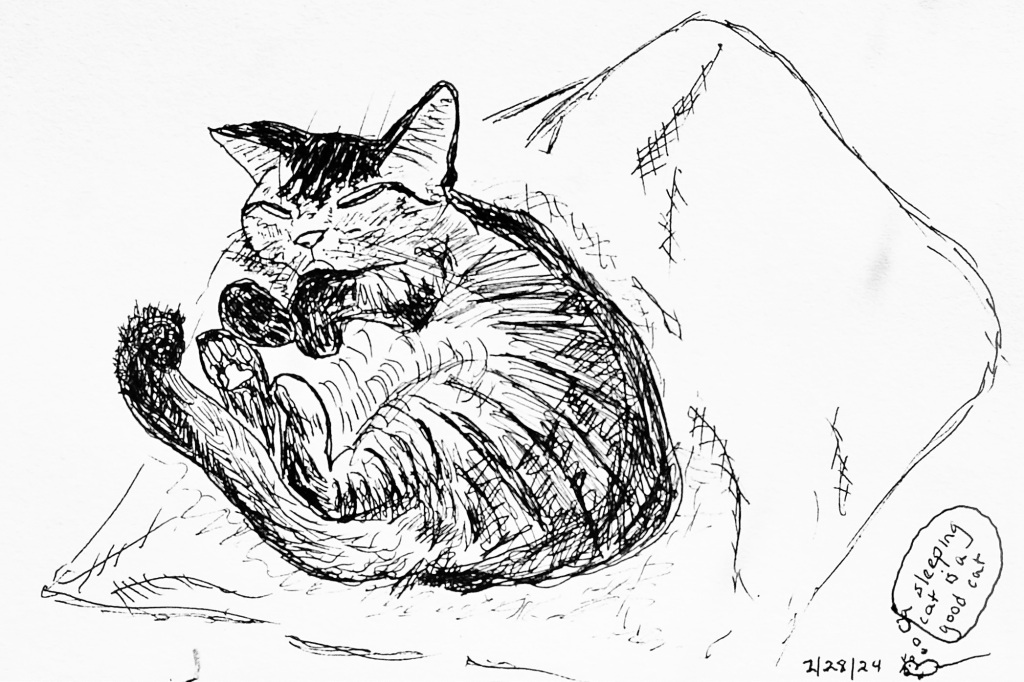I don’t usually paint from photographs – preferring studio still lifes or plein air painting. But someone posted a picture of their beautiful child and I was inspired.

art, humor, and the universe
I’ve been drawing my cat Nekko at least once daily for a month now. Why? She’s cute (of course! She’s a cat!) and I enjoy drawing people and things that I love. She is definitely people I love and of course, she’s cute. (Did I mention Nekko is my cat?) Here’s the latest of her sleeping on the Bmore Art magazine I was trying to read.

I’ve kept notebooks to write ideas, scribble in, and well…scribble more in. Keeping them handy has helped me create my poems, stories, and art. Looking through my old notebooks is like going back in time and discovering who I was. Here’s a few drawings from the past year.
Trigger Warning: I draw my cat a lot. Cuteness overload may occur.





I have lived in artistic communities since early adulthood. I love the energy, feel it even when I am alone in my room. There is affirmation of the value of creating within an art community. There is knowledge that process is important. The energy in a community where people participate in the creative process helps generate ideas, even as we disagree about the relative value of specific pieces or particular forms of art.
Art for me has been a means of keeping an even keel in a crazy world.
Often when I create, whether a poem, a painting or a song, I don’t fully understand the symbols and juxtapositions of ideas until much later. Art is not a way to recreate reality, but distorts reality in order to fully portray it, like a curved glass will focus the sun’s rays on a single point, and result in a fire.

photo of Baltimore rapper Wealth making a music video in Savage, Maryland.
Start writing before the words of the day impose themselves on you. Start while you’re still asleep, just poured the first coffee. While the dream world still holds you in sway, while your conscious mind and worries haven’t yet had time to plant themselves firmly in your mind. Start before you start playing out the arguments you might use with your boss or husband that day. Start in the dark of winter mornings, when the ghosts of the past are still present, when the darkness hasn’t yet faded, as the sun slowly spreads shadows and light and the fall leaves shake in the morning breeze, casting prisms on the floor.
I love trying new things and a knitting and crochet store just opened in my neighborhood. [www.thatsthepointneeedlecrafts.com]The yarn is seductive. It’s achingly soft, with marvelous colors, from muted, natural colors to bold, primary colors, which are actually used sari fibers spun together.
The store offered a free lesson; I couldn’t wait. I had learned some knitting when I was very young, but had long since forgotten it. I recalled swirling in the navy blue ice skating skirt my mother knit for me. Lace doilies lay across tables in my grandmother’s house, crocheted by my great-aunts. The white doilies were as delicate as snowflakes.
Recently, I saw sculptures made from crocheted yarn in the Visionary Arts Museum. [www.avam.org] A mathematician friend explained that crochet actually makes hyperbolic arches. [http://crochetcoralreef.org/crochet-coral-reef-book.php] After knitting a bit, I realized the art is mathematical, and not just because of the shapes, but because I needed to count stitches so as not to lose any. Also, my knitting wound itself into a shape somewhat like a DNA molecule, which I was assured, was normal.
As I sat practicing my knitting, women stopped by to shop and chat. One of the pleasures of knitting or crocheting is that it can be done while engaging in conversation. The women were around my age, middle aged or somewhat older. They fondled the yarn, discussed patterns, techniques, and the perfect needle.They were professional women from a large variety of fields, from computers to teaching to non-profit management. They also had a wide range of interests. I even met one woman who also did aikido!
I went home satisfied and excited. This week I plan to learn crocheting.